Every modern gadget seems to come with a touchscreen whether it needs one or not, but somehow finding the best laptop with touchscreen has always been a little tricky. Like many hybridised technologies, adding this new input tech to devices that already have several others to choose from hasn't always resulted in the best laptops. Sometimes this is down to the operating systems not having touchscreen-friendly UIs. Others suffer because of poor sensitivity and lack of support for pressure-sensitive pens.
But now, the best laptop with touchscreen is a true hybrid – both in software design and form factor. The technology has finally come of age, and now even some budget laptops have touchscreens that can flip backwards to become a tablet. But what are the benefits of a touchscreen laptop, and which one is right for you?
The best touchscreen laptops at a glance:
• Best overall: Samsung Galaxy Book4 Pro 360 – View at John Lewis
• Best budget: Lenovo IdeaPad Flex 3 – View on Amazon
• Best high-end: ASUS Zenbook Duo 14 OLED – View on Amazon
Well, it's worth mentioning that if you're looking for the best laptop deals, opting for a touchscreen will reduce your choice a little. Touchscreens – at least, the reliable type – don't come cheap, but they can still be affordable. There's a lot more choice out there the higher your budget, with some seriously powerful laptop hardware behind them. Essentially, there are many great reasons to buy one of these – from productivity enhancements to being able to fold it into a tablet to take notes on. Thankfully, we're here to help you narrow things down – with our expert buyer's guide and more at the end of the article.
We've found touchscreen laptops for under £1000 as well as a few that tip the scales at almost £3000. If you need all that power and have deep enough pockets, some could even rival many desktop machines. So, fingertips and stylus pens at the ready – here are our picks for the best laptop with touchscreen of the year.
The best touchscreen laptops of 2024:
All prices are correct at the time of writing. Prices, stock and deals are subject to change without notice.
Best overall
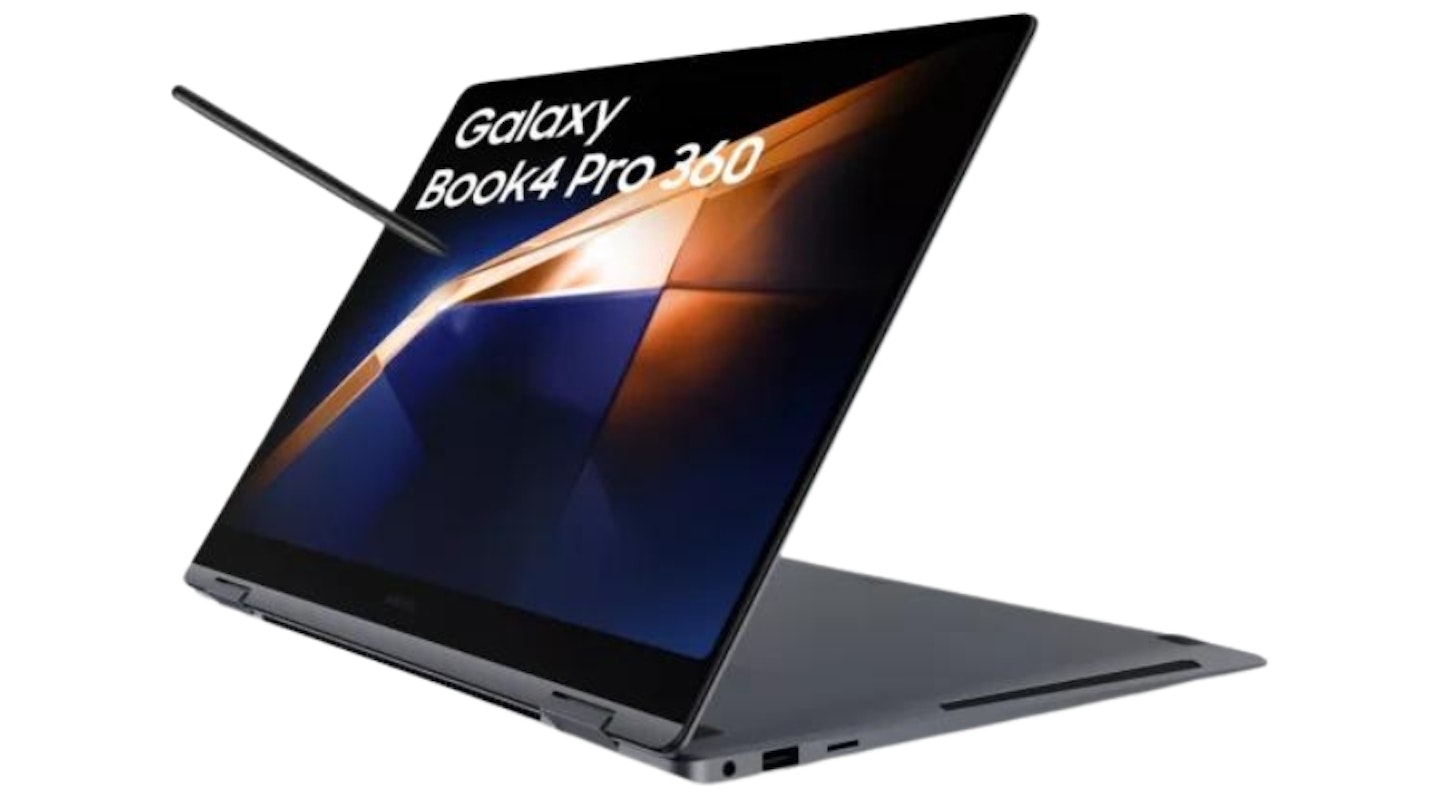 Samsung
Samsungwww.johnlewis.com
The Galaxy Book4 Pro 360 is a fantastic laptop in just about every regard. The CPU is reliable and efficient, ensuring everything runs smoothly. Including a stylus means you can get straight to using the touchscreen right away. Speaking of said screen, it's a 3K 120Hz AMOLED display, meaning the whatever you look at will be deep, detailed, bright and vibrant.
In the age of tech companies barely giving you a cable with your product, this comes with an S-Pen stylus included. The included speakers come from AKG, and are equipped with Dolby Atmos quality.
We only have one minor complaint to mention: the storage capacity. For a laptop of this size and price, 512 GB is fairly standard, but it feels a bit behind the rest of this device's specs.
Pros
- Incredible 3K screen
- Lots of ports fo rimproved connectivity
- Fast RAM, and a lot of it
Cons
- Keyboard and pen come separate
| CPU | Intel Core Ultra 7 155H |
| GPU | Integrated Intel Arc Graphics |
| RAM | 16GB |
| Storage | 512GB SSD |
| Display | 16-inch |
| Battery life | Up to 22 hrs |
| Dimensions | 12.8 x 355.4 x 252.2mm |
| Weight | 1.66 kg |
Best budget
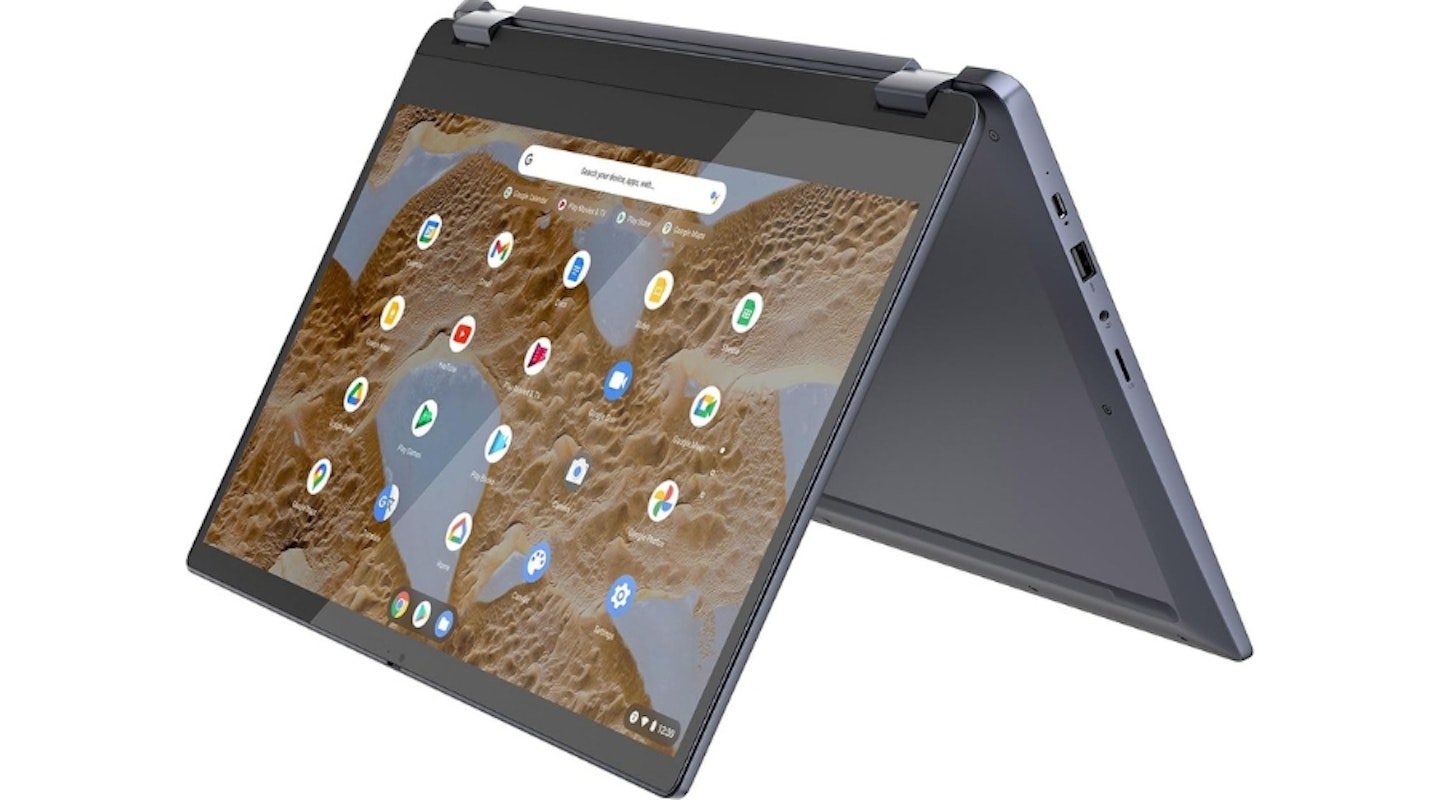 Lenovo
LenovoIf you're looking for a laptop with a touch screen and aren't looking to break the bank, this little laptop may be able to help. The 15.6-inch screen is just big enough to enjoy watching the latest blockbusters, while also highlighting its strength as a compact, portable and affordable choice. Combining ChromeOS with a touchscreen makes a device that immediately feels like a breeze to navigate.
One of the main draws of the Flex 3 is its speed. The CPU allows it to boot up fast and run just as well. There isn't a lot of RAM or storage, so something to keep in mind when buying is to not expect it to run Blender or any intensive programs.
Pros
- Great screen for the price point
- Great tilt angle range
- Able to add storage after the fact
Cons
- A bit on the heavy side for something meant to be portable
| CPU | Intel Celeron N4500 |
| GPU | Integrated Intel UHD Graphics 600 |
| RAM | 4GB |
| Storage | 128GB SSD |
| Display | 15.6-inch |
| Battery life | 17 hrs |
| Dimensions | 362 x 248 x 18.9 mm |
| Weight | 1.9 kg |
Best high-end
ASUS is a reliable name you can count on for laptops, and the ZenBook Duo is a great example of why. To go along with the touchscreen, this laptop is designed with a wide tilt angle in mind, so you can always set it how you like. Not to mention you can do whatever you like with a whopping 32GB of RAM, the top-of-the-line Intel Core Ultra 9-185H alongside the great dual display. The display alone deserves it's own praise, dual 3K 120Hz screens with great colour accuracy as well as the 500 nits brightness to make sure whatever you're working on, will look great.
The GPU might be underwhelming, but this was never meant to be a gaming powerhouse. Instead, it focuses on being reliable in various ways. Not only is it dependable, but also innovative, featuring dual touchscreens with it's removable keyboard means however you want to use it, you can. This is doubly effective for those who are used to a dual monitor setup and would like to mimic that when they work away from their desk. The only downside being that despite all the praise given to it, it has no dedicated GPU which rules out tasks such as rendering and activities like gaming.
Pros
- Largest screen in the list
- Versatile with the removable keyboard
- Fantastic spec list
Cons
- Lack of dedicated GPU a little underwhelming
| CPU | Intel Core Ultra 9-185H |
| GPU | Integrated Intel Iris Xe Graphics |
| RAM | 32GB |
| Storage | 2TB SSD |
| Display | Dual 14-inch 3K |
| Battery life | 13.5 hrs |
| Dimensions | 313.5 x 19.9 x 217.9 mm |
| Weight | 1.75 kg |
Best Chromebook
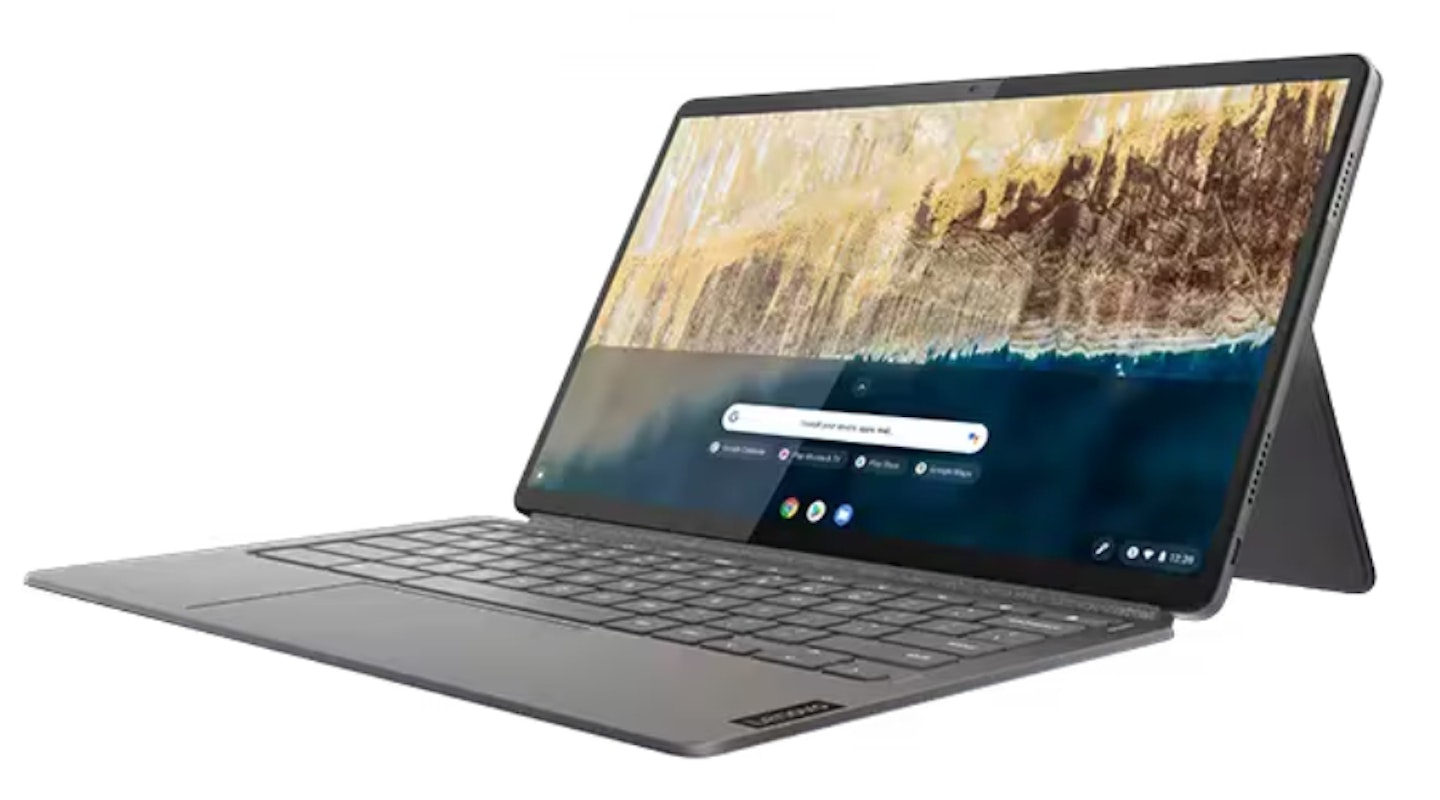 Lenovo
Lenovowww.currys.co.uk
A Chromebook is a laptop that runs on ChromeOS instead of Windows, which is the case with this LENOVO IdeaPad. It's a 2-in-1 design, meaning it can flip between a laptop and tablet mode. We're fond of this one thanks to its detachable keyboard making it easy to pack away, especially handy for students who are looking for a compact computer to take to lectures.
The tech side of this IdeaPad is great. It's got an OLED screen and four speakers, so it's set for visuals and audio. The storage capacity is a bit low for a laptop, but it can be managed by investing in good external storage.
Pros
- Detachable keyboard
- OLED screen
- Great set of four speakers
Cons
- Smaller CPU to aid with keeping the size small can limit productivity
| CPU | Qualcomm Snapdragon 7c Gen 2 |
| GPU | Integrated |
| RAM | 8GB |
| Storage | 256GB |
| Display | 13.3-inch |
| Battery life | 15 hrs |
| Dimensions | 7.2 x 305.9 x 186.8 mm |
| Weight | Tablet 0.70 kg + Keyboard 0.32 kg |
Best for students
 Lenovo
LenovoWe mentioned earlier that touchscreen laptops are great for students, and the Lenovo ThinkPad L14 Gen 1 is the best in that category. As you can imagine from the ThinkPad family, it is as sturdy as they come, in addition to packing in a whopping 16GB of RAM, and a reputation for longevity like no other laptop out there.
No matter where this laptop ends up, years abroad, cramped study halls, research trips, or even if it never leaves your desk, the ThinkBook workhorse will stay with you from the start to the end of whatever course you maybe on, and beyond.
Pros
- Fantastic computational power for gaming or editing
- Sleek and modern design
- Small size also makes it good as a student laptop
Cons
- Battery life can suffer under the strain of the components
| CPU | AMD Ryzen 5 4500U |
| GPU | AMD Radeon RX Vega 6 |
| RAM | 16GB |
| Storage | 512GB |
| Display | 14-inch |
| Battery life | 10 hrs |
| Dimensions | 331 x 235 x 20.4 mm |
| Weight | 1.7 kg |
Best for gaming
 ASUS ROG
ASUS ROGIf you wanted the power of a gaming rig in the space of an iPad, ROG has you covered. ASUS' premium gaming line outshine themselves (with RGB) once again, combining top-spec gaming hardware, such as an RTX 4060 with a Core i9 processor and 16GB of DDR5 RAM to give you the performance of a full-sized rig that can fit in your bag. The screen you'll be touching and playing on has a fantastic 500 nits of brightness, meaning HDR gaming is possible with this little laptop.
Though, as is standard with smaller laptops (especially those with gaming-level components) power might be an issue. As long as you keep the charger nearby, you can go where you need to, and play what you want along the way.
Pros
- Fingerprint sensor is a great feature
- ThinkPad's known for reliable functionality
- Strong computational power
Cons
- Design is very "no-frills"
| CPU | Intel Core i9-13900H |
| GPU | NVIDIA GeForce RTX 4060 |
| RAM | 16GB |
| Storage | 1TB M.2 SSD |
| Display | 13.4-inch |
| Battery life | 6 hrs |
| Dimensions | 302 x 14.2 x 206 mm |
| Weight | 1.18 kg |
Best for durability
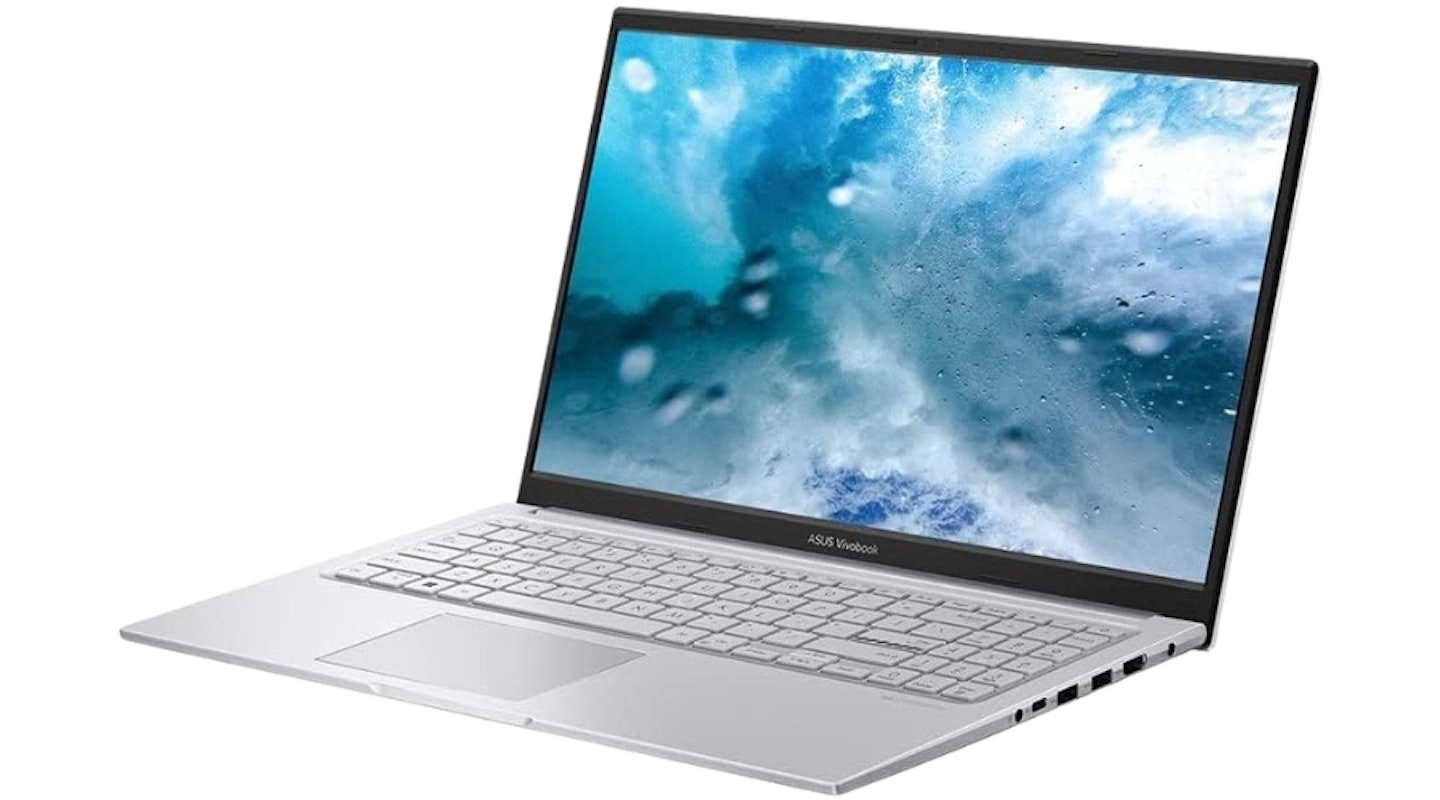 ASUS
ASUSAnother representative from the ASUS family, but this one more suited to the every day user. The Vivobook range from ASUS has proven popular with many, as great all-rounder laptops, and this one is no different. Though it has everything you'd expect from a great touchscreen laptop at a reasonable price, it has one more thing you wouldn't expect.
ASUS pride themselves on having durable products, and are willing to back it up, with this laptop rated for US military Grade toughness, meaning wherever your everyday takes you, this laptop can come along. If you end up buying this laptop, you can be safe in the knowledge that it'll be around for a while.
Pros
- Sleek and still durable
- Great mid-range price and specs for a laptop
- A wide range of ports, say goodbye to dongles
Cons
- There have been some complaints about low speaker volume
| CPU | Intel Core i5-1335U |
| GPU | Integrated Intel HD Graphics 1335 |
| RAM | 16GB |
| Storage | 512GB SSD |
| Display | 15.6-inch |
| Battery life | 12 hrs |
| Dimensions | 359.7 x 17.9 x 232.5 mm |
| Weight | 1.7 kg |
Best Apple
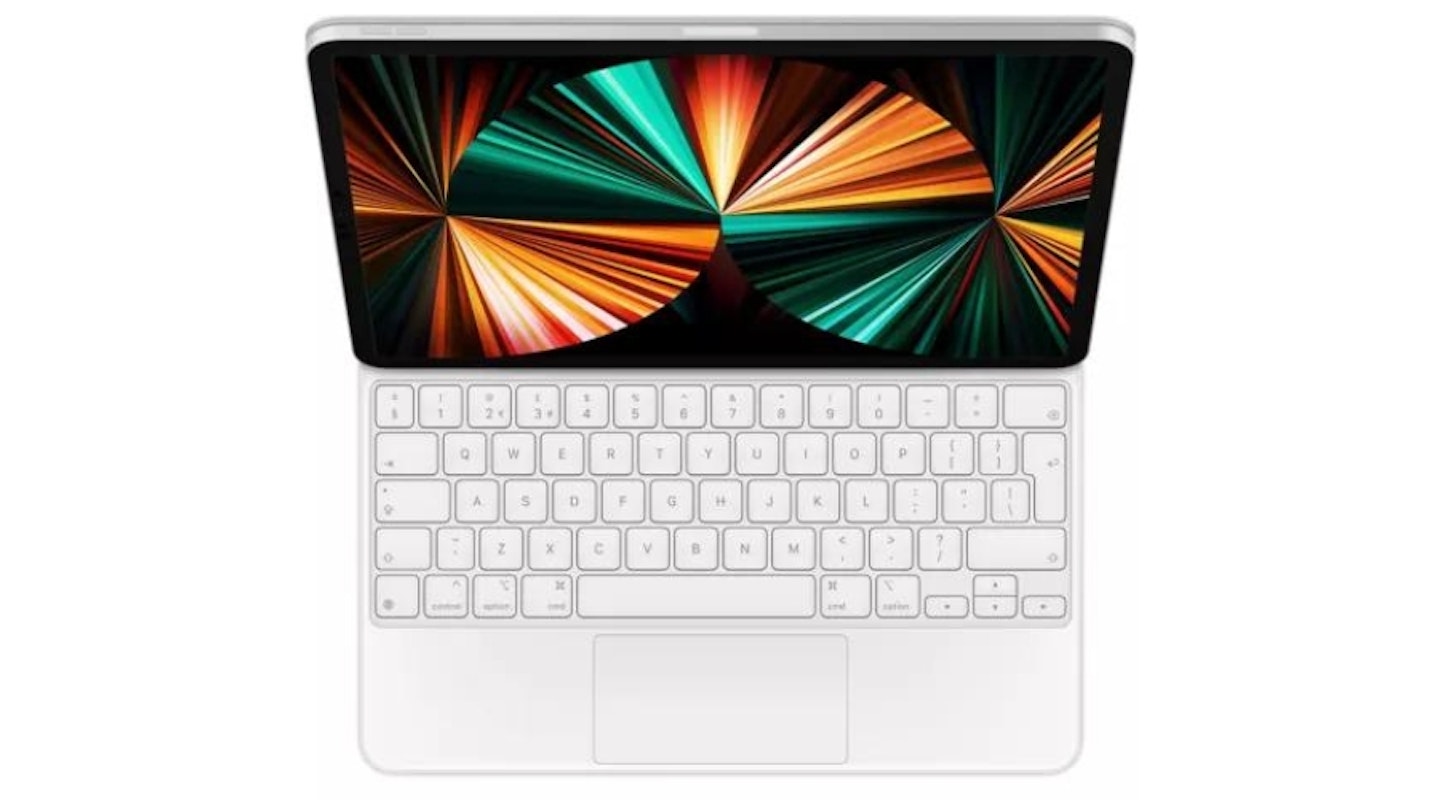 Apple
AppleThis may be putting the "touchscreen" before the "laptop", but there's no denying just how much tablets have taken off as laptop alternatives, and with the new generation of iPads they could soon become even more popular. Equipped with the astonishing M2 chip from Apple, this makes the most of every GB of RAM, every inch of the Liquid Retina display and every core it has access to. The bang for your buck here is great, even through Apple's usual pricing being on the higher side.
There is one major downside however, if you actually want to use the tablet as a laptop, you'll need to get the Magic Keyboard alongside it, which will set you back an extra £250. It's a great bit of kit, very highly rated and recommended, we just wish there was a way to get the two bundled together.
Pros
- Slimmest and lightest option on the list
- M2 chip is known for packing a lot of power into a small package
- Fantastic Liquid Retina display, great for artists and editors
Cons
- Keyboard not included
| CPU | Apple M2 chip |
| GPU | Integrated graphics |
| RAM | 8GB |
| Storage | 256GB SSD |
| Display | 11-inch |
| Battery life | 10 hrs |
| Dimensions | 247.6 x 178.5 x 6.1 mm |
| Weight | 0.46 kg |
Best for portabilty
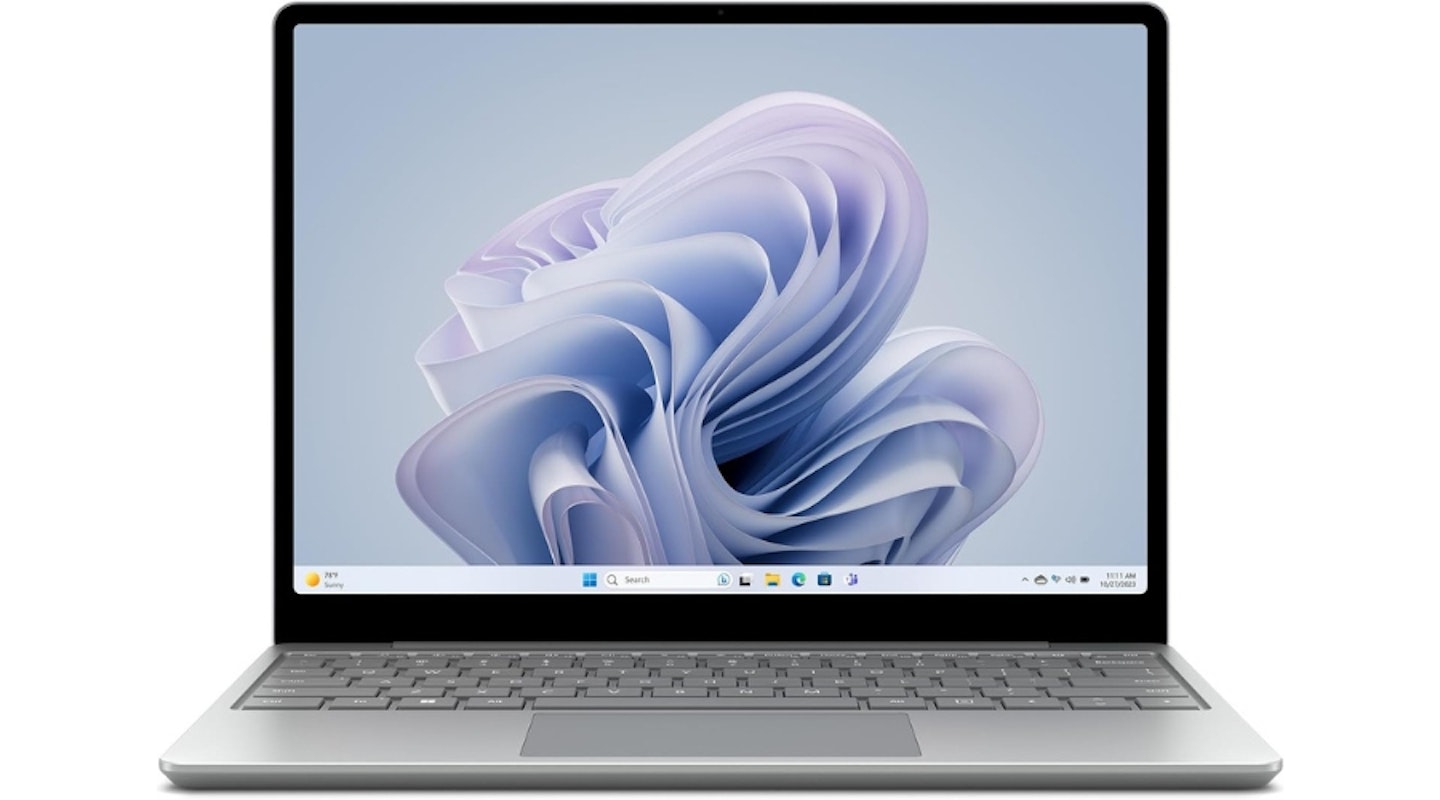 Microsoft
MicrosoftFor the most compact full laptop experience on this list, the Microsoft Surface Go 3 has all you need. The slightly larger cousin of the Surface tablet line, this laptop gives you a conventionally great performance whilst being whisper-thin. Great display, great speakers, great build-quality and great components tie this laptop together into a great entry on this list.
For something you may need to keep in a backpack, or even a purse, this will give you every drop of performance you want without taking up the space other laptops may. Cooling has always been an issue when it comes to making technology smaller and smaller, so keep an eye on your temps when attempting intensive tasks.
Pros
- Ultra-thin and light for a standard size laptop
- Wide range of colour options
- Great integration with Microsoft Office
Cons
- Cooling may be an issue down the road
| CPU | Intel Core i5-1235U |
| GPU | Integrated Intel Iris Xe graphics |
| RAM | 16GB |
| Storage | 256GB SSD |
| Display | 12.4-inch |
| Battery life | 15 hrs |
| Dimensions | 278 x 206 x 15.7 mm |
| Weight | 1.13 kg |
The one that started it all, often seen as the progenitor of the tablet revolution in the laptop scene, this edition of the surface packs all the punch you'd expect, while being as small as a magazine. Now enhanced with Microsoft's Copilot AI as well as dedicated Neural cores on the CPU, streamlining your workflow and future-proofing your workstation never felt better.
However, all that power comes at a price, and unfortunately you'd only get the touchscreen part of touchscreen laptop for the initial price, having to invest in the Surface Pro Keyboard and Stylus separately. Even then, they're great quality, and the total cost can amount to less than some of the other options on this list. It's something to keep in mind when budgeting for your new touchscreen laptop, but don't let it dissuade you from the great qualities of the Surface Pro.
Pros
- Laptop-scale performance for a tablet is very impressive
- Great AI integration
- Upgradabe SSD is a nice bonus
Cons
- Keyboard and pen not included
| CPU | Snapdragon X Plus X1P-64-100 |
| GPU | Integrated Adreno graphics |
| RAM | 16GB |
| Storage | 256GB SSD |
| Display | 13-inch |
| Battery life | 14 hrs |
| Dimensions | 9.3 x 287 x 208 mm |
| Weight | 0.89 kg |
FAQs
Can you disable the touchscreen on a laptop?
It depends on and varies by model, but for the most part, you should be able to disable the touchscreen. If your device is leaning towards the tablet side of design, it may not be possible, but it will be an option for any standard laptop with a touchscreen.
To turn off the touchscreen, you'll need to disable it via the device manager. This is usually located in the control panel, which you can find in your settings. There should also be other options here, so you could turn down the sensitivity if that's the main issue.
Certain laptops will also have key shortcuts to enable and disable the touchscreen, which is much easier and more convenient than hunting down the exact settings page.
Are touchscreen laptops good for drawing?
While they don't rival dedicated drawing tablets, touchscreen laptops are fantastic for drawing. Many come with a stylus or are at least compatible with one, so drawing should feel more or less automatically natural. The touchscreen provides a better sense of tactile feedback that a regular laptop cannot replicate. The best touchscreen laptops for drawing perform well with creative apps. Any laptop well-suited to using the Adobe Creative Suite gets bonus points here.
Who is it best suited for?
If you're a digital creative working in media or photography, the best laptop with touchscreen is your best friend. Often bundled with a pressure-sensitive stylus or pen, having a screen you can work directly with in this way is a godsend, unleashing new types of creativity, Of course, underneath this is still a laptop rather than a souped-up tablet, so you should prioritise the graphics card and RAM. Yes, the best 17-inch laptops will give you a massive screen to work on, but touchscreens at this size are a bit of a rarity.
If you need to use your touchscreen laptop as a business productivity or study tool that will work well with Office 365, look at the CPU and keyboard. Casual users who like to do a bit of everything can afford to look for less high-end but more evenly-balanced specifications.
How to use a touchscreen laptop?
So, you have a laptop that can turn into a (although slightly less slim) touchscreen tablet. But when is it time to use a laptop like a tablet and vice versa? Well, touchscreens are everywhere in all manner of devices these days – but that doesn't mean we should take them for granted.
Very specific uses for a touchscreen on a laptop are being able to interact fluidly with websites designed for mobile devices. And there are also various mobile games that work best with touchscreens. Plus, there's using the touchscreen as a handy extension of your existing control interfaces. For instance, photographers use pinch to zoom and designers take full advantage of the special pressure-sensitive pens that make drawing and design work direct and intuitive. Also, students can use the same accessories to take notes the old-fashioned way and convert that handwriting into editable text. Business people can utilise touchscreens for giving desk-based presentations, avoiding constant mouse or keyboard interactions.
Should I use a screen protector?
Don't forget that you'll need to protect that beautiful shiny touchscreen. A range of easy-to-apply adhesive glass screen protectors are available to suit all models. They will also allow the touchscreen to work as normal and protect it from light impacts and scratches. Make sure you have enough money left to keep it safe and secure too, with a laptop backpack, case or an impact-resistant bag.
Can you use a mouse with a touchscreen laptop?
Yes. Just because a laptop has a touchscreen doesn't mean you can't use it as a regular laptop. You can connect an external mouse, keyboard and more via Bluetooth or the available ports. While touchscreen laptops are great for creative work and tablet-style browsing, gamers (other than fans of mobile gaming) will prefer a mouse for their sessions. For hardcore players, a dedicated gaming laptop is the best option – but those are less likely to have a touchscreen.
Will I still need a VPN?
Having the best laptop with touchscreen means it's much more usable in a number of settings. So, chances are you'll need to connect to public wifi at some point. While you should invest in security suite software such as Bitdefender or McAfee, what about your personal data and privacy? A VPN (Virtual Private Network) is a secure tunnel to the internet that hides your IP address from would-be hackers and snoopers. If privacy is your priority, we highly recommend an affordable VPN for that extra layer of security.
Best touchscreen laptop of 2024: Jargon buster
Capacitive Touch
This is the key technology that makes a screen sensitive to touch from your finger or a stylus pen. They work by having a conductive material embedded between the layers of the screen. That layer is sensitive enough to detect minute changes in electrical charge caused by your fingertip touching the screen. The software relays that to the operating system as the same sort of coordinate-based input used by a standard mouse. Of course, a capacitive touchscreen can achieve more than a normal mouse, thanks to supporting multiple touchpoint gestures; such as using two fingers to pinch and zoom.
Solid State Drives (SSD)
SSD is a newer version of HDDs (Hard Disk Drives). You're more likely to find them inside the best laptop with touchscreen because they're slim, silent and fast. They use no moving parts: it's far quicker at data retrieval. They write and read using electronic flash memory, much like USB flash drives. Data is stored in grids and blocks, and though the process is more complicated than in HDD, the available space is utilised more efficiently thanks to a series of processes that go on behind the scenes.
CPU
A Central Processing Unit, or CPU, processes and executes instructions. They often consist of multiple cores. The higher the number of cores the more processes it can carry out, improving performance. CPUs have a 'clock speed' that is measured in GHz – the frequency of the number of operations. In theory, the higher the GHz number, the better and quicker a computer can operate.
RAM
Random Access Memory, or RAM, is short-term memory. It temporarily holds information for quick access by the CPU as it runs various programs and services. The more RAM available, the more quick-access information there is for the CPU, thereby improving computer performance.
GPU
A GPU is a Graphical Processing Unit – the central component of a graphics card. It handles the rendering of images to the computer screen. The best laptop with touchscreen is going to have a cut-down version of the much larger cards available for desktops.
Resolution
Resolution is the measurement of pixels on your screen, such as 1920 x 1080 (Full HD). Therefore, the higher the pixel count, the greater the resolution of your screen which means more detail. 4K screens are currently at the higher end of available PC and touchscreen laptop resolutions.
Kyle Purves is a Commercial Content Writer for What’s The Best, with an avid interest in all things gaming and tech.
They’re well-versed in reviewing a variety of tech products, with a soft spot for speakers and earphones. They’re also no stranger to hunting down the best savings, always wanting to get the best deal possible. Outside of work, they can often be found playing through an RPG, listening to Japanese noise rock, or trying to catch up with their ever-expanding list of shows and anime to watch. If possible, they try to play Dungeons and Dragons a couple of times a week, but getting six adults to be free at the same time is easier said than done.
Subscribe to the What’s The Best Newsletter to keep up to date with more of the latest reviews and recommendations from the rest of the What’s The Best team.



